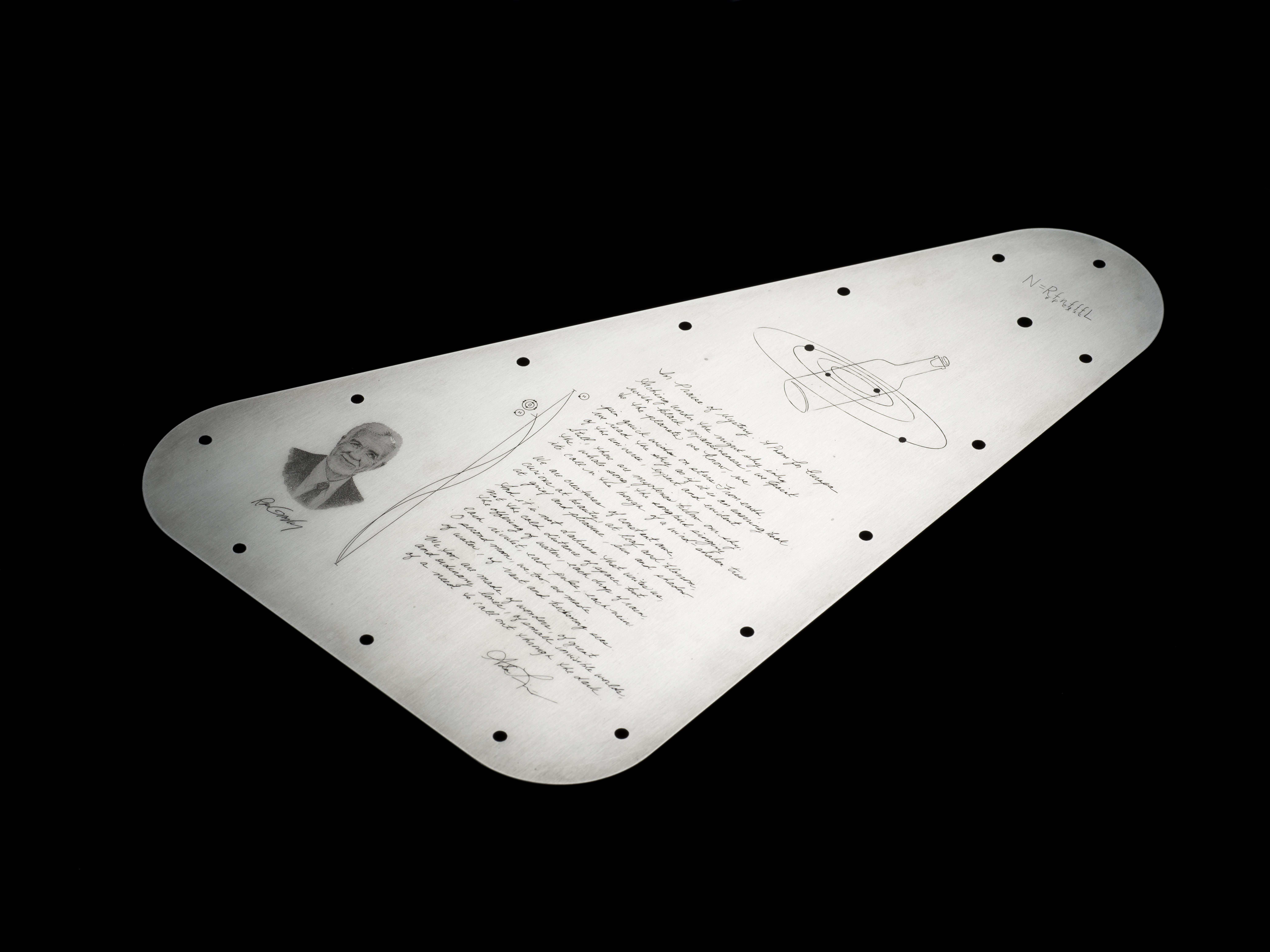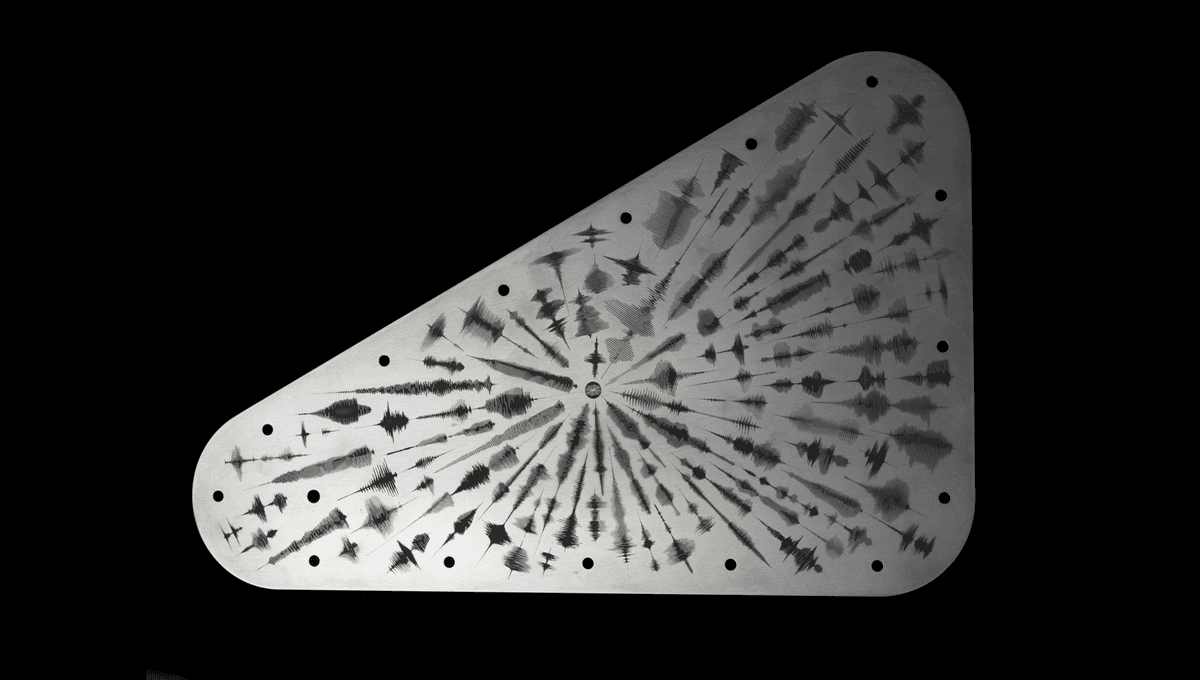In October, NASA will launch Europa Clipper – a mission that aims to study the intriguing icy moon of Jupiter like no other spacecraft has done before. And within, it will carry the names of millions, as well as other symbols of planet Earth.
NASA has described it as a “Golden Record” for Europa as, like the famous record, the designs thoroughly showcase global variety. The original Golden Record is on the Voyager probes and it contains songs, sounds, and images that were considered representative of the diversity of life and culture on Earth in the 70s.
Europa Clipper is not getting a record, however, but a plate. This is part of a structure that will protect the spacecraft from the intense radiation found around Jupiter. The internal side will feature a design called “water words”. There are 103 sound waves representing the word “water” in 103 different languages, whilst the symbol at the center represents the American Sign Language sign for “water”.

The other side of the plate with the “Message in a Bottle”, the poem, and tributes.
Image credit: NASA/JPL-Caltech
On the other side of the plate, there is going to be the name of 2.6 million people in a chip inside an engraving of a bottle. This is a reference to the initiative to include the names, which was called “Message in a Bottle”. Underneath it, there will be a brilliant poem written by U.S. Poet Laureate Ada Limón, titled “In Praise of Mystery: A Poem for Europa.” You can read the poem in English or Spanish and even hear Limón recite it here.
On the same side, there will be the Drake equation – a probabilistic estimate of intelligent life in the cosmos. We do not expect to find a civilization deep in the ocean of Europa, but there is certainly interest in looking for any sign of life in such an enormous body of water. Europa is smaller than our Moon and yet has twice the amount of water found in Earth’s oceans.
There are also radio waves representing the water hole – a range of frequencies that have been considered intriguing in the search for life beyond Earth due to the little background noise between them. On top of that, those are the frequencies of hydrogen and hydroxyl (OH), the components of water molecules when they are split apart.
Finally, there is a tribute to planetary scientist Ron Greeley, whose work on Galileo and the development of a mission to Europa has been crucial in getting Europa Clipper ready to go. It is planned to reach Jupiter in 2030, after a journey of five and a half years.
The whole series of engravings and more details about the plate are available here.


